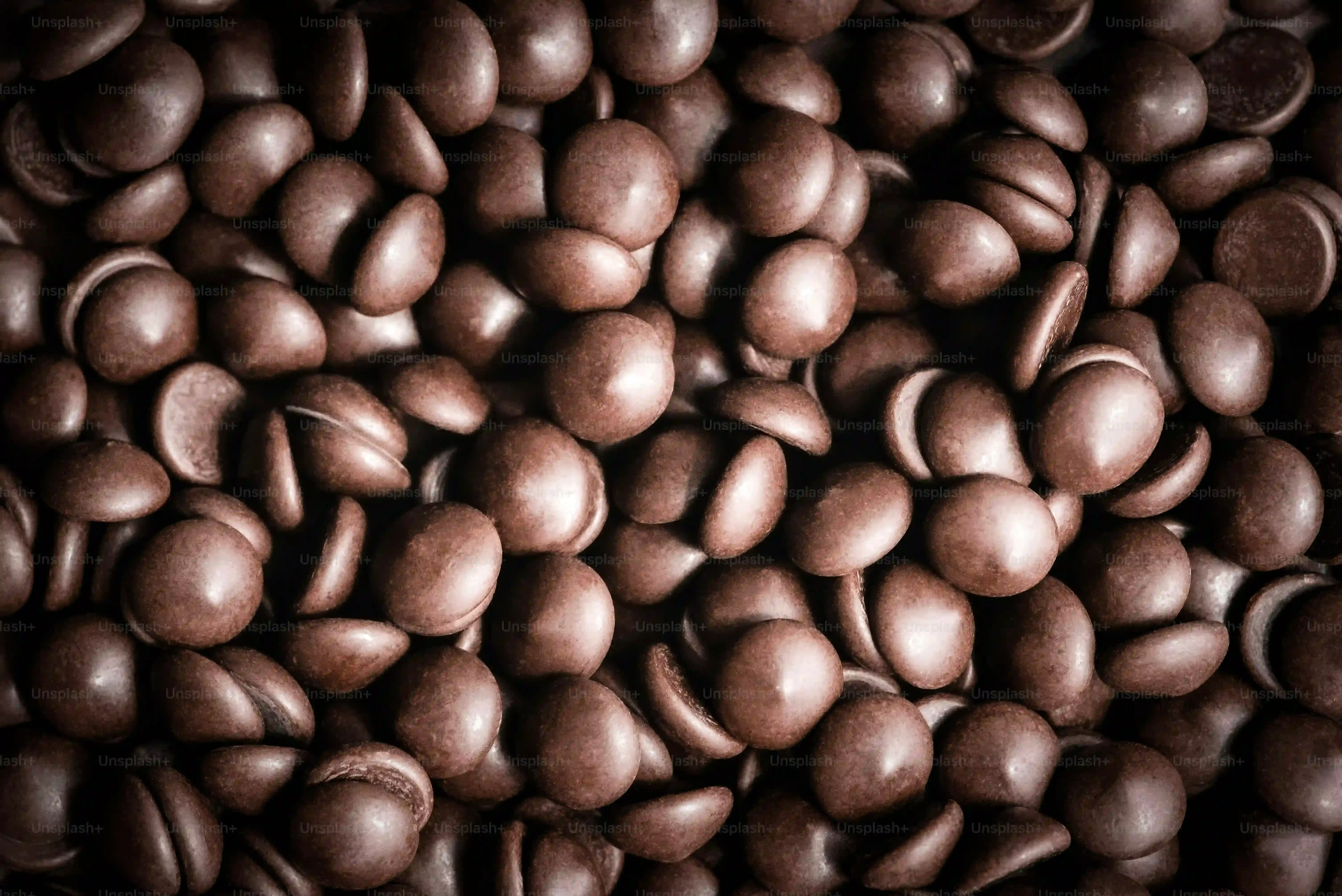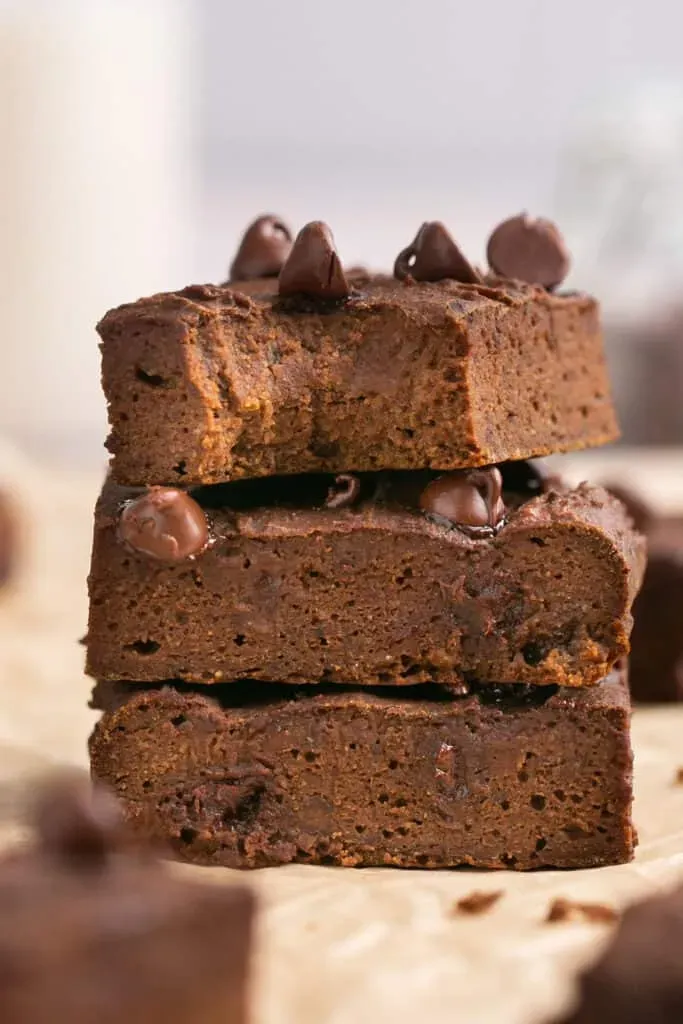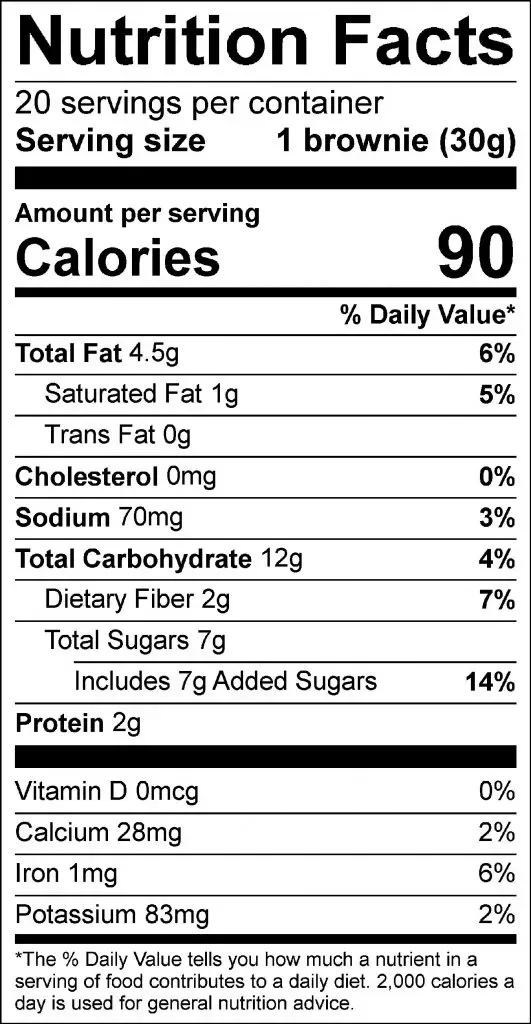Table of Contents
let's talk about brownies. Specifically, those brownies that promise a little something extra, like, you know, vegetables. Black bean brownies have become a bit of a legend in the world of "healthy-ish" desserts. You see the recipes pop up everywhere, claiming they're moist, fudgy, and secretly packed with goodness. But what's the real story when it comes to black bean brownie nutrition? Are they truly a virtuous treat, or just a regular brownie wearing a health halo?
Unpacking Black Bean Brownie Nutrition
The Brownie That Hides Its Veggies
So, you're diving into this whole "healthy dessert" rabbit hole, huh? And you stumbled upon the black bean brownie. Welcome to the club. It sounds kinda crazy, right? Beans... in a brownie? Most folks picture something dry, maybe tasting like, well, beans. But the idea is simple enough: swap some flour and fat for pureed black beans. The promise is usually fewer calories, more fiber, and maybe even a protein bump, all while keeping that essential fudgy texture we crave in a brownie. It’s about trying to sneak some actual nutritional value into something that's usually just sugar and chocolate.
Skepticism Meets Sweetness
Let's be honest, the initial thought is often "Nope." My first reaction was picturing some gritty, earthy disaster. The magic, or so they say, is that the beans disappear. They provide structure and moisture without a strong flavor, letting the chocolate do the heavy lifting. This is where the nutritional questions really start. If the beans are hidden, are they still doing their job nutritionally? Does adding beans magically turn a dessert into health food? That's the puzzle we're trying to solve when we look at the actual facts behind the black bean brownie nutrition claims.
What are people usually hoping for when they make black bean brownies?
- More fiber than traditional brownies.
- A lower glycemic index due to the beans.
- A slight increase in protein.
- Fewer calories or less refined sugar/flour.
- A way to feel less guilty eating dessert.
Breaking Down the Black Bean Brownie Nutrition Facts

Breaking Down the Black Bean Brownie Nutrition Facts
What's Actually in There? Calories and Macros
Alright, let's get down to brass tacks. You've made the leap and baked a batch of these mysterious bean-based treats. Now you're staring at one, wondering, " but what's the damage?" When you look at black bean brownie nutrition, the first things people check are calories, fat, carbs, and protein. A typical recipe, depending heavily on the amount of sweetener and chocolate chips, might land you somewhere around 100-150 calories per brownie. That's often a bit lower than a standard bakery brownie, which can easily hit 200-300 calories. Fat content varies wildly based on whether oil, butter, or something like peanut butter is used, and how many chocolate chips are dumped in. Carbs are present from the beans, sweetener, and any flour or oats used.
Fiber and Protein: Where the Beans Shine?
Here's where the black beans are supposed to earn their keep. Beans are fiber powerhouses, and that fiber does make its way into the brownie. This is a big win compared to traditional brownies made with refined flour, which offer almost zero fiber. Fiber helps you feel full and can slow down sugar absorption. Protein-wise, beans do contribute, offering a modest boost compared to flour-based brownies, but don't expect this to be a protein shake in disguise. The protein count is usually still pretty low for a dessert item. So, while the black bean brownie nutrition profile does offer more fiber and a smidge more protein, it's not a complete nutritional overhaul.
Just how different are they?
- Traditional Brownie: Low fiber, minimal protein, high refined carbs, often high saturated fat.
- Black Bean Brownie: Higher fiber, slightly more protein, complex carbs from beans, fat varies based on recipe.
- The Catch: Sugar content can still be very high in black bean brownies, offsetting some benefits.
The Sweet Truth About Sugar and Chips
Here’s the reality check: most black bean brownie recipes still use a significant amount of sweetener, whether it's maple syrup, sugar, or honey. And let's not forget the chocolate chips – often a generous amount. These ingredients contribute a lot of the calories and sugar, regardless of the beans. While the fiber from the beans might help manage the blood sugar spike a little compared to pure sugar, it doesn't erase the fact that you're still eating dessert. Focusing solely on the beans and ignoring the sugar and fat from other ingredients gives an incomplete picture of the true black bean brownie nutrition. It's a better-for-you brownie, maybe, but it's still firmly in the dessert category.
Ingredient Swaps and Their Impact on Black Bean Brownie Nutrition

Ingredient Swaps and Their Impact on Black Bean Brownie Nutrition
Playing Around with Fats: Oil, Applesauce, and Nut Butter
so you've seen the basic black bean brownie recipe, but maybe you're thinking, "Can I make this even... healthier?" This is where ingredient swaps come in, and they drastically change the black bean brownie nutrition facts. The most common target is the fat. Many recipes call for oil or melted butter. Swapping this out for something like unsweetened applesauce or pureed banana can slash calories and fat pretty significantly. You get more moisture, but you risk losing some of that classic fudgy richness that fat provides. Another popular swap is using nut butter, like peanut or almond butter. This adds protein and healthy fats, but also calories. It gives a different flavor, obviously, and changes the texture quite a bit – think denser, maybe a little chewier. Each swap has a trade-off.
Sweetener and Flour Alternatives: Shifting the Carb Profile
Beyond the fat, people often mess with the sweetener and the flour component (if there is one, some recipes are flourless, relying entirely on beans and other binders like cocoa or oats). Swapping maple syrup for honey? Not a huge nutritional difference, maybe a slight flavor change, and note that honey isn't vegan if that matters to you. Using a sugar substitute? That will drop the sugar and calorie count dramatically, but you might run into weird aftertastes or texture issues, as artificial sweeteners don't behave like sugar in baking. If the recipe uses oats or flour, swapping to almond flour or coconut flour changes the carb and fat profile. Almond flour adds more fat and protein, while coconut flour is super absorbent and adds a lot of fiber but needs more liquid. These changes fundamentally alter the black bean brownie nutrition breakdown, so be mindful of why you're swapping.
Common Ingredient Swaps and Effects:
- Oil/Butter to Applesauce/Banana: Lower fat, lower calories, potentially less fudgy texture.
- Oil/Butter to Nut Butter: Higher fat, higher protein, different flavor, denser texture.
- Maple Syrup/Sugar to Honey: Similar nutrition, flavor change, not vegan.
- Maple Syrup/Sugar to Sugar Substitute: Much lower sugar/calories, potential flavor/texture issues.
- Oats/Flour to Almond Flour: Higher fat, higher protein, lower net carbs (if counting).
- Oats/Flour to Coconut Flour: Lower carbs, much higher fiber, needs more liquid, drier texture if not adjusted.
Your Black Bean Brownie Nutrition Questions Answered

Your Black Bean Brownie Nutrition Questions Answered
Are Black Bean Brownies Actually "Healthy"?
This is the million-dollar question, isn't it? You see "black bean" and "nutrition" in the same sentence, and you want to believe. The truth is, it's complicated. Compared to a standard, sugar-laden, white-flour-based brownie loaded with butter, yes, a black bean brownie *can* be a step up. They typically offer more fiber and sometimes slightly less refined sugar and fat, depending heavily on the specific recipe. But let's not pretend it's a salad. It's still a dessert, usually containing sugar, chocolate, and some form of fat. The benefit lies in the *relative* improvement in black bean brownie nutrition over their traditional cousins, not in transforming them into a health food you should eat for breakfast daily.
Does the Fiber Content Really Matter?
Absolutely. This is where the black beans genuinely contribute. While they might not turn the brownie into a nutritional powerhouse, the fiber they add is significant compared to a brownie made only with refined flour. Fiber helps slow down digestion, which can mean a less dramatic spike in blood sugar after eating. It also contributes to feeling fuller, potentially making you less likely to devour the entire batch in one sitting (though no promises there). So, while the calorie count might still be high depending on the sugar and chocolate, the increased fiber is a tangible benefit for black bean brownie nutrition.
What does that extra fiber do?
- Helps you feel full longer.
- May help stabilize blood sugar levels compared to low-fiber sweets.
- Supports digestive health.
- Adds beneficial bulk without adding calories.
Can I Make Them Fit My Diet (GF, Vegan, etc.)?
Often, yes. Many black bean brownie recipes are naturally gluten-free if they use oats or almond flour instead of wheat flour, or are entirely flourless. You just need to ensure any added leavening agents or extracts are certified gluten-free. For vegans, black bean brownies are usually easy to adapt. Swapping butter for oil or a plant-based spread, using a non-dairy milk, and ensuring your chocolate chips are dairy-free typically does the trick. These substitutions, as we touched on earlier, will impact the overall black bean brownie nutrition, particularly the fat sources and potentially the protein if using something like nut butter. Always check individual ingredients if you have strict dietary needs.
Beyond the Brownie: More Healthy Dessert Options

Beyond the Brownie: More Healthy Dessert Options
Is There Life After the Bean Brownie?
so you've explored the world of black bean brownie nutrition. You get it – they're not magic health pills, but maybe a slightly better way to get your chocolate fix than inhaling a box of Little Debbies. But what else is out there if you're trying to scratch that dessert itch without completely derailing your sensible eating? Turns out, the black bean brownie isn't the only game in town when it comes to desserts that try to sneak in a little something extra. The principle is often the same: use whole ingredients, rely on natural sweetness where possible, and maybe add some fiber or healthy fats.
Exploring Other "Better" Sweet Treats
Think about avocado mousse – avocados providing healthy fats and creaminess, masked by cocoa and sweetener. Or date-based energy balls, using the natural sugar and fiber from dates to hold together nuts and seeds. Baked apples with cinnamon and a sprinkle of oats? Classic, simple, and genuinely high in fiber. Sweet potato brownies are another cousin to the black bean variety, offering beta-carotene along with the usual brownie suspects. The goal isn't to make these taste *exactly* like their full-sugar, full-fat counterparts, but to create something satisfying that offers a bit more nutritional bang for your buck.
Healthy Dessert Alternative | Key Ingredient | Potential Benefit |
|---|---|---|
Avocado Mousse | Avocado | Healthy Fats, Creaminess |
Date Energy Balls | Dates | Fiber, Natural Sweetness |
Baked Apples | Apples | Fiber, Vitamins |
Sweet Potato Brownies | Sweet Potato | Fiber, Beta-Carotene |
Managing Expectations with Smarter Choices
Look, no dessert is going to replace a balanced meal. That's just reality. The point of exploring options like black bean brownies or these alternatives isn't to find a loophole to eat unlimited sweets. It's about making slightly more informed choices when you *do* decide to have dessert. Acknowledging the black bean brownie nutrition facts means understanding its limitations. Similarly, choosing a date ball over a candy bar is a small win, adding fiber and nutrients instead of just refined sugar. It's about finding satisfaction in treats that offer *some* value beyond just a sugar rush, and perhaps controlling portions better because they might be a bit more filling.
The Bottom Line on Black Bean Brownie Nutrition
So, where do we land on black bean brownie nutrition? They offer a decent amount of fiber thanks to the beans, which is a win compared to traditional brownies. The calorie count and macronutrient breakdown can vary quite a bit depending on the specific recipe and any substitutions you make, especially regarding added sugar and fat sources. While they might not be a magic health food, they can be a reasonable option for satisfying a sweet craving while getting a little extra fiber. Just remember to look at the ingredients and portion size. They're not a free pass, but they can be a step in a different direction than your standard boxed mix.
